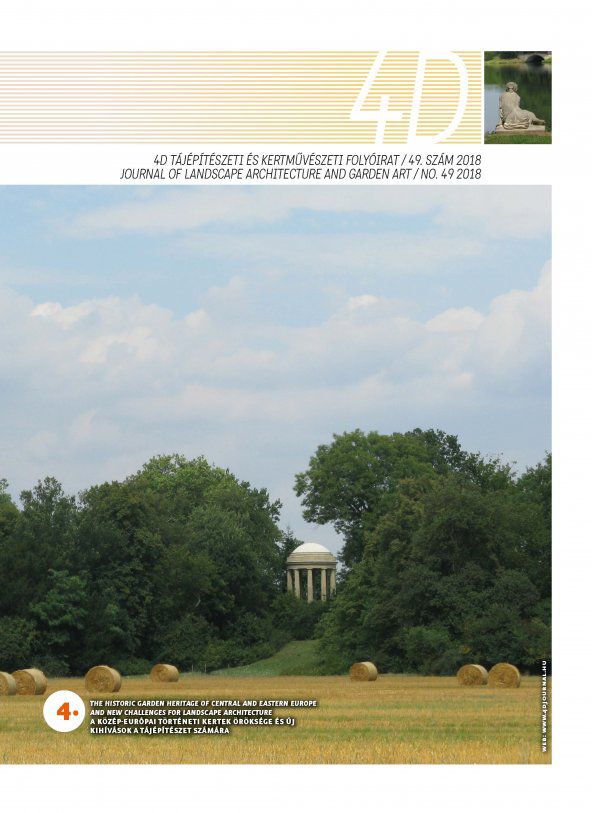Kultúrtáj-megújítás: a Jangce folyó menti poldertáj fejlesztése az ökotudatos tájgondozás hagyományainak megújításával
Kulcsszavak:
kultúrtáj-megújítás, Jangce, poldertáj, ökotudatos, tájgondozásAbsztrakt
A Jangce folyó mentén található Anhui tartományban a helyi lakosság a mezőgazdasági termelése során speciális, a helyre jellemző, ún. poldertájat alakított ki. A polderek (feltöltött területek), a folyó és a gátak az itt élő emberekkel és állatokkal együtt különleges társadalmi - ökológiai rendszert alkotnak.
A poldertáj nem csak ökológiai, hanem történelmi szempontból is különleges rendszer is, amely napjainkban a terület beépítése miatt új kihívások előtt áll. A cikk áttekintést ad a poldertáj hagyományos tájhasználatáról, a vízgazdálkodás, a mezőgazdaság és a társadalom szerves egységéről. A világ számos országában vannak ehhez hasonló polderterületek (a legismertebbek Hollandiában), azonban a használat és a fenntartás mindenütt speciális; ez a kutatás kifejezetten a Jangce folyó mentén kialakult tájjal, a hagyományos feltöltött területekkel foglalkozik.
Hivatkozások
Guo W, Hou X L. Dredge, Drain and Reclaim: Landscape Analysis of Polder Model in Dutch Lowlands[J]. Landscape Architecture, 2015(8): 16–22.
ZHUANG Huafeng. Cultivation of Diked Paddy - Fields in Ancient South - East China and Their Effects on Ecological Environment[J]. Journal of Chinese Historical Geography, 2005(3): 87–94.
NAVEH Z. The total human ecosystem: integrating ecology and economics [J]. BioScience, 2000(4): 357–361. https://doi.org/10.1641/0006-3568(2000)050[0357:TTHEIE]2.3.CO;2
Hou X L, Guo W. Polder Landscape Study Discussion on Form, Function and Impact[J]. Landscape Architecture, 2015.
Guo W, Hou X L. Dyke, Reclamation and Settlement: Landscape Architectural Analysis of Polder Landscape in Xiaoshao Region[J]. Chinese Landscape Architecture, 2016(7): 41–48.
Guo W, Hou X L. Land from the Sea: Landscape Architectural Analysis of Lake Bed Polders in North Holland during Golden Age[J]. Chinese Landscape Architecture, 2015, 31(7): 97–101.
Wang J Q, Tang C H, Yan W T. Mechanism and Pattern of Polders in the Yangtze River Delta: Effective Physical Form for Ecosystem Services Provision[J]. Landscape Architecture, 2018(1).
Dong C, Gao J. Assessment for polder water ecosystem service functions in western part of Taihu basin[J]. Journal of University of Chinese Academy of Sciences, 2014.
Manen S E V, Brinkhuis M. Quantitative flood risk assessment for Polders[J]. Reliability Engineering & System Safety, 2005, 90(2): 229–237. https://doi.org/10.1016/j.ress.2004.10.002
Guo W, Hou X L. The Analysis on Flexible Strategies of Flood Control in Netherlands Delta[J]. Landscape Architecture, 2016(1): 34–38.
Cremers, Jan; Bekker, Sonja; Dekker, Ronald. / The Dutch polder model: Resilience in times of crisis. Talking through the crisis: social dialogue and industrial relations trends in selected EU countries. editor / Igor Guardiancich; Oscar Molina. Geneva: ILO, 2017. pp. 189–212.
Barendregt A, Wassen M J, Smidt J T D. Hydroecological modelling in a polder landscape: a tool for wetland management[M]// Landscape Ecology of a Stressed Environment. Springer Netherlands, 1993: 79–99. https://doi.org/10.1007/978-94-011-2318-1_4
Nillesen A L, Kok M. An integrated approach to flood risk management and spatial quality for a Netherlands’ river polder area[J]. Mitigation & Adaptation Strategies for Global Change, 2015, 20(6): 949–966. https://doi.org/10.1007/s11027-015-9675-7
Liu T, Dan-Zi W U. Study on the Vernacular Landscape in the Perspective of Landscape Architecture——Taking the River Network Plain in Taihu Basin as An Example[J]. Chinese Landscape Architecture, 2014.
Nijhuis S F, Han B. Polderscapes: The Landscape Architecture of the Dutch Lowlands[J]. Landscape Architecture, 2016.
GUO Wei, HOU Xiaolei. Dyke, Reclamation and Settlement: Landscape Architectural Analysis of Polder Landscape in Xiaoshao Region[J].Chinese Landscape Architecture,2016(7): 41–48.
LYLE J. Design for human ecosystems: landscape, land use, and natural resources [M]. Island press, 1999.
Letöltések
Megjelent
Folyóirat szám
Rovat
License
Copyright (c) 2018 Daixin Dai

This work is licensed under a Creative Commons Attribution-NonCommercial-NoDerivatives 4.0 International License.
A folyóirat Open Access (Gold). Cikkeire a Creative Commons 4.0 standard licenc alábbi típusa vonatkozik: CC-BY-NC-ND-4.0. Ennek értelmében a mű szabadon másolható, terjeszthető, bemutatható és előadható, azonban nem használható fel kereskedelmi célokra (NC), továbbá nem módosítható és nem készíthető belőle átdolgozás, származékos mű (ND). A licenc alapján a szerző vagy a jogosult által meghatározott módon fel kell tüntetni a szerző nevét és a szerzői mű címét (BY).


 intézetigazgató: Dr. Fekete Albert
intézetigazgató: Dr. Fekete Albert

